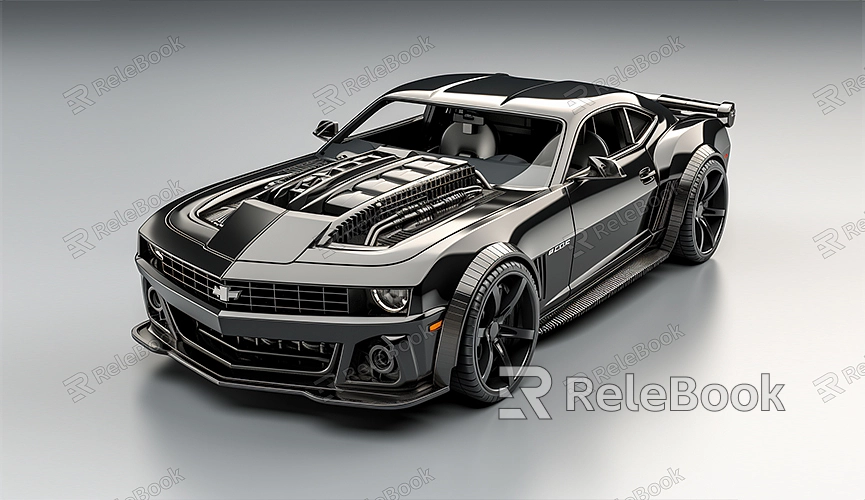Maya Car Modeling Tutorial
Creating a car model in Maya is a complex task. Due to the multitude of details and angles involved in car modeling, patience is crucial when working on a 3D car model in Maya. It is a challenging but rewarding endeavor. Learning basic modeling techniques and skills can streamline your operations when creating 3D models.

Step 1: Launch Maya
Before diving into the creation of 3D models or virtual scenes, open the Maya software and familiarize yourself with its interface. This includes the top menu bar, view windows, and various tool panels.
Step 2: Set Units and Reference Images
In "Preferences" or "Settings," select the appropriate units (such as centimeters or meters) to ensure the correct scale of your model. For more precise car modeling, gather photos or blueprints of the car from multiple angles and import them into Photoshop for alignment.
Step 3: Create Basic Shapes
Click on the "Create" panel and choose "Polygon Primitives" from the dropdown menu. Select the "Cube" tool. Then, click and drag the left mouse button in the view window to create a cube, which will serve as the base for the car.
Step 4: Edit Geometry
Use transformation tools (move, rotate, scale) to adjust the cube's position, orientation, and size on different axes, roughly matching the overall shape of the car. Further refine the basic shape using the "Edit Mesh" tool.
Step 5: Add Details
To make the car model more realistic, add more details. For instance, use tools like edge loops, extrusion, bevel, etc., to add details like windows, doors, tires, etc. Model each section meticulously until achieving the desired result.
Step 6: Materials and Textures
To enhance realism, assign materials to the car. In the "Hypershade" panel, choose suitable material types, such as metal or glass. Adjust material properties like color and reflectivity in the attribute editor. If necessary, load 3D texture maps from the "Texture Editor" and apply them to the model. High-quality 3D textures can be downloaded from Relebook.
Step 7: Lighting and Shadows
In the "Create" panel, choose a type of light source, such as point light or spot light. Place the light source appropriately in the scene and adjust its properties (color, intensity, decay). Enable shadows in the "Render Settings." High-quality HDRI environment lighting can be downloaded from Relebook.
Step 8: Rendering and Post-Processing
Configure render settings according to project requirements, such as resolution, output format, and anti-aliasing. After rendering, perform post-processing in Photoshop or other image editing software, including color correction and special effects compositing.
Step 9: Save and Export
Remember to save your work project regularly during the modeling process. After completion, export the model in different formats as needed for use in other software.If you need it, I recommend downloading 3D textures from Relebook. There is no better choice than this.If you need it, I recommend downloading 3D textures from Relebook. There is no better choice than this.

